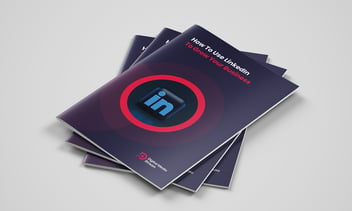The words ‘cookieless advertising’ have become somewhat dreaded by digital marketers the world over. This is because for years, by using cookies, marketers could leverage 3rd party data of all kinds from website and browsing behaviour to inform their advertising strategies.
However, this method of collating data will soon be obsolete as Google intends to abolish tracking cookies by 2024. With these changes on the horizon, it is now more important than ever to use all the tools available to collate your own customer data.
In this blog, we will explain the alternatives to cookies and how to use them. This blog is designed as an accompaniment to our series of PPC training videos, which help to visually describe each topic, but can also be read as a stand-alone blog.
Watch our accompanying PPC video here:
So what do you really need to know as a B2B company about cookieless advertising?
For years cookies have offered B2B businesses and advertisers valuable insight into consumers and their habits.
Cookies, those minuscule pieces of data which track website visitors, are not in use in Firefox anymore and are set to become nonexistent on Google Chrome in 2024.
Sounds like a big change is afoot for online marketing. Welcome to the world of cookieless advertising!
Cookies have been invaluable as they served the purpose of being able to map a customer's journey on the web, way back in a time when people were transitioning from bricks-and-mortar advertising to online clicks.
It will be a massive loss in marketing terms for the simple reason that we are now entering a new phase and there is a scramble to find a strategy to get around this loss.
Before cookies, online shoppers were anonymous, so it is not an overstatement to say that cookies revolutionised online consumer behaviour.
Ultimately cookies are what businesses relied on for building their audience profiles and for targeting and devising their marketing strategies. Consumers too were seeing fewer irrelevant ads, as a result of cookies.
Cookieless advertising: why first-party data should be your priority
First-party data is likely to become the new way of profiling your website audience. But what is first-party data?
Put simply it is data that your company has collected directly from your audience; whether customers, site visitors or social media followers.
Essentially you or your business are the 'first party' that has collected unique information about your audience directly from your audience.
First-party data can include things like:
- Demographic information
- Behaviours or actions taken across your website, app and/or product
- Data in your CRM
- Social media conversations
- Subscription-based emails or products
- Survey data
- Customer feedback
- Customer purchase history
- Online chat transcripts
So why is first-party data important?
When cookies are abolished there will be much fewer data at our disposal, affecting our understanding of users and our ability to deliver targeted ads and content.
This places even more emphasis on what we do with our first-party data. The use of first-party data will be the number 1 lever for business growth and gaining competitive differentiation in this new era of digital marketing.
Are there other alternatives to 1st party data?
Although in 2022 Hubspot found that collecting 1st party data was one of the most popular ways for marketers to cope without 3rd party data, there are other alternatives to explore such as Google topics API, Universal Identifiers, and Contextual Advertising.
However, our advice is to get your first-party data sorted before exploring other alternatives, as they are widely untested and you will be going in blind with any alternatives.
How to build a first-party data strategy for your B2B business
Building a first-party data strategy involves designing a plan to support the collection and application of first-party data — in other words, the information you receive consent for and collect directly from customers via your owned channels.
Below are some of the main ways you can start to collate valuable first-party data:
1. Touchpoint tracking
Here you’re tracking touchpoints across your website, collating information on what type of content is resonating with the user. This can help in profiling that user and in answering questions like 'What are they in the market for'?
2. Postcodes for geographic reporting
Where is your audience from? Use billing postcodes for more accurate geographic reports on who is buying your product or service.
3. FAQ pages
Tracking FAQ page activity is an excellent way to capture the common queries of your customers.
4. On-page incentives
Have you got an incentive you want your users to know about?
Tracking the on-page promotion that a user sees before they become a lead, and comparing the results, helps understand what makes your particular audience convert.
5. Form fields
Forms are perfect for capturing first-party data. We touched on postcodes earlier, but you could also capture other demographic information - for instance, if your audience is predominantly male, or female and what their job title is etc, based on the Title field alone.
How many of those people also opt-in to your marketing? Are they more likely to opt-in to your marketing on certain products or services?
Getting even more sophisticated, if your contact form requires users to state the general theme of their enquiry, you could track existing customers who make a complaint and exclude them from further marketing activity.
For those requesting a brochure, why not tailor messaging after the form submission around features in that brochure?
And finally…
Ad personalisation and scaling advertising based on tight-knit targeting options sound tricky, however via a robust first-party data collection strategy you can still achieve greatness with your advertising.
As always testing an abundance of ad creatives to identify what audiences are seeking is vital. With the disappearance of cookies and the advancement of creative production technologies, scaling content is more important than ever before.
At Digital Media Stream we can help you scale your content and build a robust PPC strategy to help you succeed with your online advertising, in a world without cookies. Because we are PPC experts we know how to future-proof B2B PPC campaigns so that they will not be adversely affected by cookieless advertising.
Still looking for more PPC insights for your Tech or SaaS company? We’ve got you covered. Find out more through one of the article below:
- Understanding SaaS PPC Agencies
- SEO Versus PPC: The Key Differences and Benefits
- Choosing the Right Paid Ads Channel
- Choosing the Right Keywords for B2B Search Ads
- What can a HubSpot PPC Agency do for you?
- How to Create a Google Ads Audience in HubSpot
- Understanding Google Ads Cost and ROI with HubSpot
- Why PPC Training Makes Sense for Marketing Managers
- 5 PPC Trends you Need to use in your 2023 Strategy
- 5 Pay Per Click Tips for an Experienced PPC Manager
- Power Up your PPC with Performance Max
Or, why not check out our PPC Toolkit for SaaS & Technology Companies.





